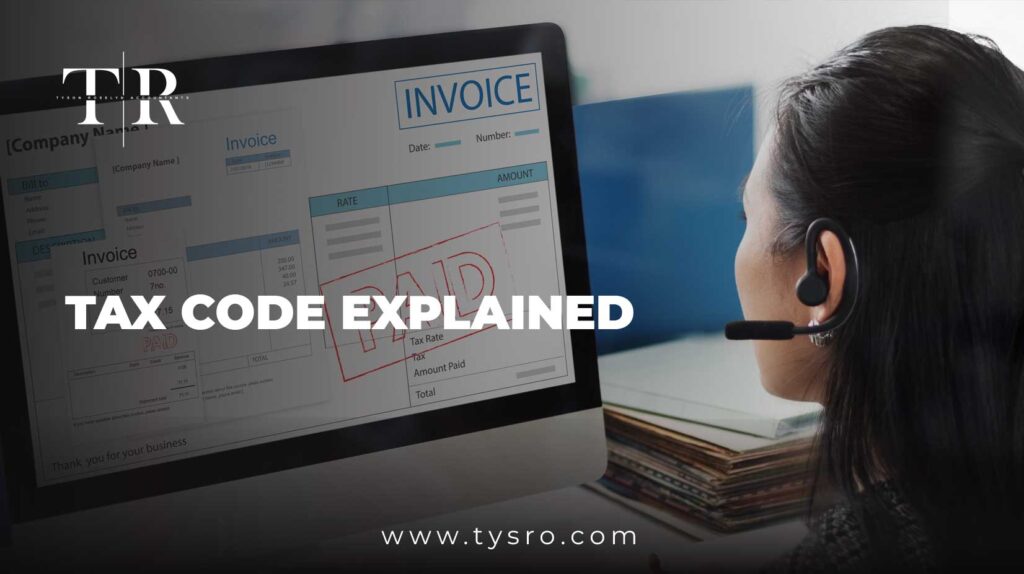Introduction
Let’s be honest — when most people hear the word “tax,” their eyes glaze over. Tax codes sound complex, dry, and even a little scary. But knowing how they work is essential for employees, business owners, and even freelancers. So today, we’re diving into the Tax Code Explained in simple, everyday language — no jargon, no confusion.
Why Should You Care About the Tax Code Explained?
Your tax code is more than just a line on your payslip — it determines how much income tax you pay and how much you take home. Misunderstand it, and you could be overpaying or underpaying tax, leading to surprises from HMRC or your local tax authority.
Here’s a story to set the stage:
Anecdote:
Jane, a 32-year-old marketing assistant in London, noticed her paycheck seemed lighter than expected. After months of shrugging it off, she finally called HMRC. Turns out, she’d been assigned the wrong tax code and had overpaid nearly £900! If only she had understood what her tax code meant…
By the end of this guide, “Tax Code Explained” won’t be a mystery anymore — it’ll be your financial ally.
What Is a Tax Code?
Let’s get the Tax Code right from the basics.
In the UK (and many other countries), a tax code tells your employer how much tax-free income you’re entitled to in a year. In other words, it helps determine how much Income Tax to deduct from your earnings.
Most people in the UK, for example, have a tax code like 1257L, which means they can earn £12,570 tax-free in 2025 before tax kicks in. If you’re outside the UK, your country’s system may vary, but the concept is similar.
What Does a Tax Code Look Like?
Here’s a quick breakdown of a typical tax code — for example, 1257L:
- The numbers (1257) represent your tax-free personal allowance (e.g., £12,570).
- The letter (L) means you’re entitled to the standard allowance.
Other codes might include letters like:
- BR – You’re taxed at the basic rate on all income (common with second jobs).
- D0 – You’re taxed at a higher rate (no tax-free allowance here).
- K – You owe tax from a previous year or get taxable benefits.
Check your code here on Gov.uk or contact your tax authority.
How Is Your Tax Code Calculated?
Here’s your step-by-step guide:
Step 1: Determine Your Personal Allowance
This is how much you can earn tax-free. In 2025, this is typically £12,570 in the UK.
Step 2: Adjust for Other Income or Deductions
If you have multiple jobs, receive benefits (like a company car), or owe back taxes, your allowance could be adjusted.
Step 3: Get Your Code
HMRC or your national authority calculates your code and sends it to your employer. You’ll also get a notice (P2 letter or digital update).
Step 4: Apply the Code
Your employer uses it to calculate how much tax to deduct from your salary.
Common Tax Code Problems
Understanding the Tax Code Explained also means knowing where things can go wrong.
1. Wrong Tax Code
If you’ve changed jobs recently or started freelancing, you might get the wrong code. Always check your payslip or login to your HMRC Personal Tax Account.
2. Emergency Tax Codes
These are temporary and often overcharge you. Look out for codes like W1, M1, or X.
3. Multiple Jobs Confusion
If you have more than one job, make sure your personal allowance is applied to the right one.
Tax Code and Self-Employed Workers
If you’re self-employed, the Tax Code still matters — just a bit differently. You’ll usually pay your taxes via Self Assessment, but if you switch between employment and freelance work, tax codes still affect how much is deducted during your PAYE (Pay As You Earn) months.
How to Check and Correct Your Tax Code
Don’t just assume it’s right. Here’s how to stay on top of it:
- Review your payslip monthly. Your code is usually printed near the top.
- Login to your tax account via Gov.uk (UK) or your national portal.
- Contact HMRC or your local authority if something looks off.
- Use online tax calculators to estimate what your take-home pay should be.
Benefits of Understanding Your Tax Code
Understanding the Tax Code isn’t just about avoiding mistakes — it’s about saving money and gaining control.
- Avoid overpaying or underpaying tax
- Catch errors before they affect your finances
- Make informed job decisions based on tax impact
- Plan your yearly finances with clarity and confidence
FAQs
What does a tax code like 1257L mean in the UK?
It means you can earn £12,570 tax-free in 2025 before income tax is deducted. The “L” shows you're entitled to the standard personal allowance.
What happens if I have the wrong tax cod
A wrong tax code can cause you to overpay or underpay tax. HMRC may issue a refund or request back payments once the error is corrected.
Can freelancers be affected by tax codes?
Yes. If you freelance and also work under PAYE, your tax code affects how much tax is deducted from your employed income.
What is an emergency tax code like W1 or M1?
Emergency tax codes are temporary and often overcharge you. They’re used when HMRC hasn’t received all your income details yet.
Can I change my tax code myself?
No, but you can request a review. Contact HMRC if you think your code is wrong. They’ll investigate and adjust it if needed.
Final Thoughts
The Tax Code Explained might sound intimidating, but once you get the hang of it, you’ll feel more confident about your finances. It’s one of those areas of life where a little knowledge goes a long way.
If you’re tired of second-guessing your tax status or dealing with confusing paperwork, now’s the time to take control. Whether you’re employed, a freelancer, or managing a side hustle — get help from trusted platforms like Tysro.com that simplify taxes and help you get the most out of your income.


